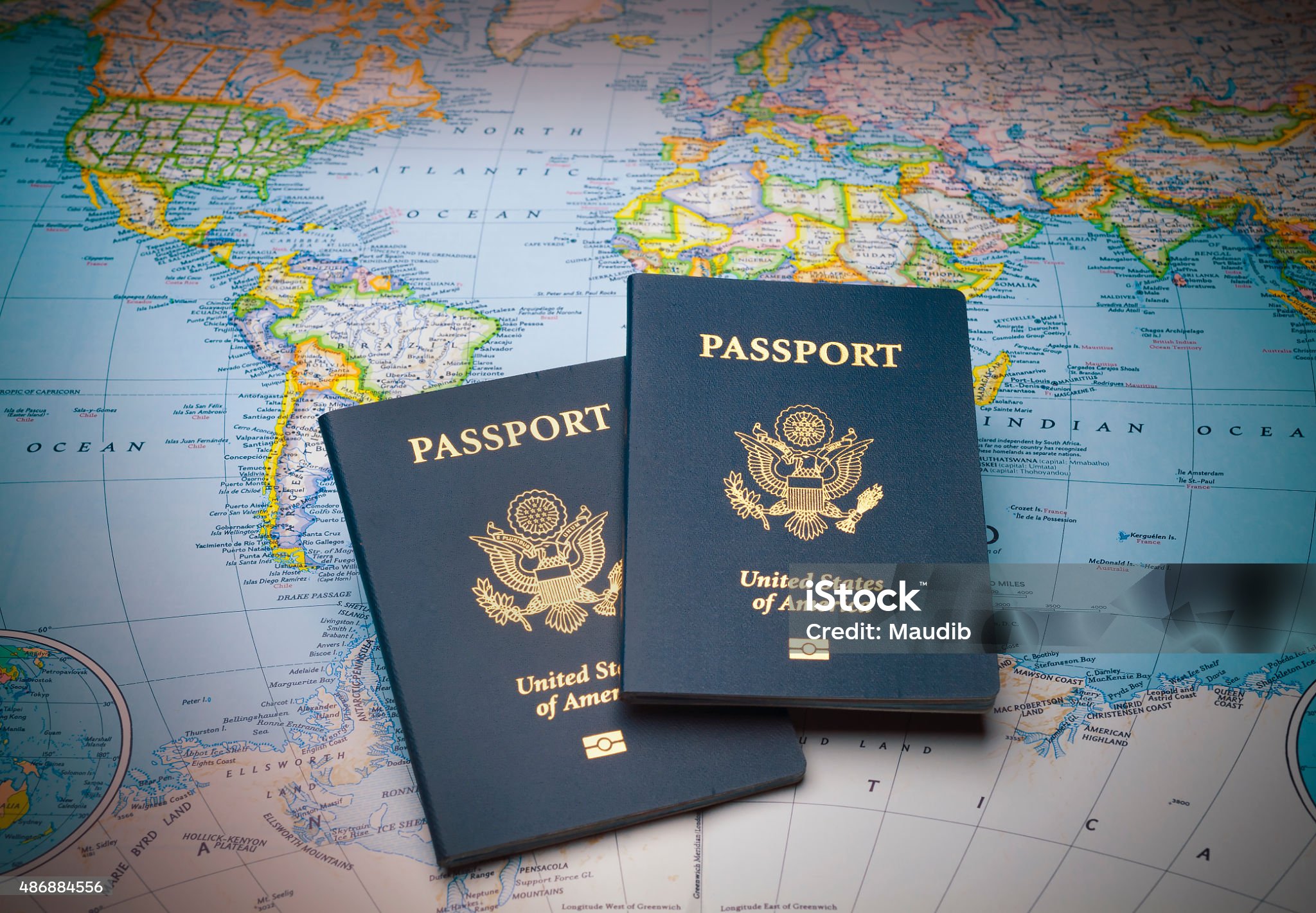
1. Overview of Identification Documents
Personal identification documents hold great importance from both personal and social perspectives. Serving as "permissions" and "access tools," these documents ensure smooth societal operations. There are different kinds of identification documents, and each of them signifies a particular aspect. For example, a copyright serves as proof that a person can legally drive, while a copyright verifies citizenship and facilitates international travel. Such documents hold significant personal importance and are essential when handling contracts, such as for employment, services, insurance, or rentals. Often, financial institutions might require access to these forms of identification when dealing with borrowers who appear unreliable or have poor credit histories. These documents function as both identity verification and legal authorization to operate financially or otherwise.

Historically, identification documents did not hold as much importance in daily affairs as they do today. The importance of these documents has grown alongside changes in security measures and legal requirements. Advances in information technology have made it possible for organizations to develop secure systems that are far ahead of the cutting-edge ID technologies available to the general public. Many countries are in the process of standardizing their IDs with biometric technology. A few countries have implemented electronic exit strategies.
Personal identification documents represent an individual's legal confirmation of identity. The "real identification" acknowledged universal documents include passports, copyright, copyright, and driver's licenses at both the international and national levels. People often keep these important identification papers safely secured so that they can retrieve them easily when necessary.
In this discussion, we delve into the legitimacy and importance of documents such as the IDP, Real ID, copyright, copyright, copyright, and resident permits, aiming to enhance public awareness of their necessity. Both educators and the public should be familiar with these documents, as it could be useful in preventing the loss or aiding in the recovery of such essential items. This information is provided for both local and international audiences to make sure they have the most important documents for their needs and understanding.
2. Laws and Regulations Pertaining to Identification Documents

Identification documents fall under different laws and regulations depending on the jurisdiction. Documents are issued directly to individuals by an issuing authority and under specific guidelines and rules intended to keep the integrity and accuracy of the document. These documents can be mandatory for certain situations while serving as optional verification in others. It is the responsibility of the individual to comply with the legal guidelines set by the jurisdiction where the document is to be used. In summary, it is important for individuals to understand the local or specific legal requirements that apply to them in any jurisdiction where they expect or plan to carry out any transaction or to use such documents. Primarily, local and state government bodies regulate, issue, and control the use of certain identification documents for particular transactions.
The varying requirements of each jurisdiction and reasons for identification documents, may clash with the necessity for international travel and business operations. Thus, it is a widespread issue when travelers feel disconnected and confused when traveling internationally and encountering different identification document regulations. While it is impractical to outline all the specific regulations from each country, it is crucial to recognize that with almost 200 nations and billions of people interacting, understanding the rules is important for global travel and commerce. By not following the rules, individuals may find themselves in conflict with another country’s laws, and that is where the rules of reciprocity and international legality come into play. Failure to comply could cause legal implications, both civil and criminal, by infringing on laws about identity, privacy, commerce, trade, and human rights.
Public policies and protected rights may conflict when setting security rules for travel identification documents. That is, human rights may conflict with public policy on the tightest, most secure identification and documentation required to combat terrorism. Finally, within the last five years, because of the advent and recognition of using digital mobile driver licenses, countries have either clarified their laws on this or started to draft regulations and laws to govern their usage beyond just technology, which is a moving target. Digital identification documents for travel are being considered as the future direction for global travel management. Despite the shift towards mobile driver’s licenses, there will still be a requirement for passports for a significant period of time.

The standard and evolution of mobile driver licenses and digital ID is occurring too. For example, almost two years after California passed its law defining mobile copyright requirements, stakeholders are about to agree on formal regulations for the first state-sponsored mobile copyright.
3. Comparative Study of International Driver’s License, Real ID, copyright, copyright, copyright, and Resident Permit
The International Driver’s License acts as an identification document for those driving abroad The International Driver’s License was never developed by the UN or international organizations as a travel facilitation tool between countries.
The Real ID is primarily used as an ID for boarding domestic flights, in line with state driver’s licenses and ID cards that meet national criteria. In addition to domestic travel, the Real ID grants access to federal facilities and nuclear power plants. It is important to note that the Real ID is not a substitute for travel documents like passports, visas, or resident permits. Even though some individuals may use the Real ID abroad for personal identification or date of birth purposes, its main function is for domestic travel within the United States.
More specifically, passports are in the United States a form of original rather than derived identification. A copyright is largely an instrument of foreign policy; it was made to protect citizens from arrest or to help them travel and attend non-obligatory meetings to negotiate treaties or other matters of common concern. This is the official, often administrative, use. The copyright also has, of course, a bureaucratic or private use. To travel internationally, or even regionally in some cases, travelers must not only possess a copyright but also adhere to various other regulations.
The copyright is an official document provided at birth, which is necessary to obtain passports and other types of identification. When comparing the two, copyright and passports may seem to have the same general function. That said, a copyright carries additional long-term benefits. Also, even if served in acquisition, the copyright never leads to the acquisition of a “second copyright”. A copyright does not influence the acquisition of a second copyright unless the individual plans on obtaining an illegal second nationality.
4. Anti-Fraud Mechanisms and Security Features in Identification Documents
Several security measures are in place to prevent the counterfeiting, modification, and fraudulent usage of identification documents. Many identification documents utilize features such as holograms, multi-layered images, and laser engravings for enhanced security. Other cards may contain an embedded RFID chip with a stored digital image and other biometric information.
A number of these security components remain covert or semi-covert, including elements like special inks, watermarks, or microscopic text. All these features aim to make ID documents challenging to forge.

Typically, the security level of an identification document needs to match the trust or authority level it represents. For instance, a copyright doesn’t need the same high-level security features as a copyright, which is primarily used for international travel.
Advances in technology have driven the creation of more advanced security elements for ID documents. Actively promoting and adopting new security technologies helps keep one step ahead of potential fraudsters and counterfeiters by using up-to-date issuance practices.
Moreover, it is also important to continually evaluate existing and potential security features and issuance methods. This ensures that these features stay ahead of evolving threats that could undermine document security.
Furthermore, an effective anti-fraud document security program should focus on proactive as well as reactive strategies. Proactive measures might include training programs, public information efforts, security seminars, and public service announcements.
5. Conclusion and Future Trends in Identification Document Technology
This document takes a global look at some of the many variants of identification documents in the world. It is important to see ID not only from the point of view of the technical level (multiple security features, function to verify, government and issuance bodies that could verify, etc.), but also from a legal standpoint, focusing on how these documents hold up in courts for verification.
Research indicates that opinions on the quality of identification documents and their verification worth differ depending on the context of use. It would also be interesting to examine through ethnographic methods how the definition of a “good” identification document varies by country. Comparison studies also reveal that legitimacy standards for identification documents can vary across nations with similar socio-political and economic structures.
The future of identification documents is being shaped by cutting-edge technological advancements. Technology is continuously boosting the CV and service offering of standard secure documents such as eIDs to follow the adoption of mobile phones. The main landmarks in this new convergence include biometrics and blockchain technology, particularly for distributed ledger use.
Biometrics and its “liveness” function will capture biometric data during direct interaction with the enrolling authority, ensuring identity accuracy and reducing the risk of digital identity fraud. It will go beyond copyright our basic human rights recognized by international law and several constitutions. This access must remain as private as possible and the subject of consent.

Digital identity systems might contribute to exclusion, particularly for individuals who do not have easy access to digital identification systems. Not everyone is able to easily obtain a digital identity. Some already speak of an “identity gap” caused and reinforced by new technologies that, with different ways of use, can generate structurally unequal levels of identity verification to access certain spheres of human society.
Digital identity systems should be more systematically compared with physical identification documents. So, apart from verifying identity, these databases are used to verify the risk levels for various transactions. Further research is needed to examine how the rights associated with offline identification verification can be extended to digital identity scenarios.